How to Grow and Care for Begonias
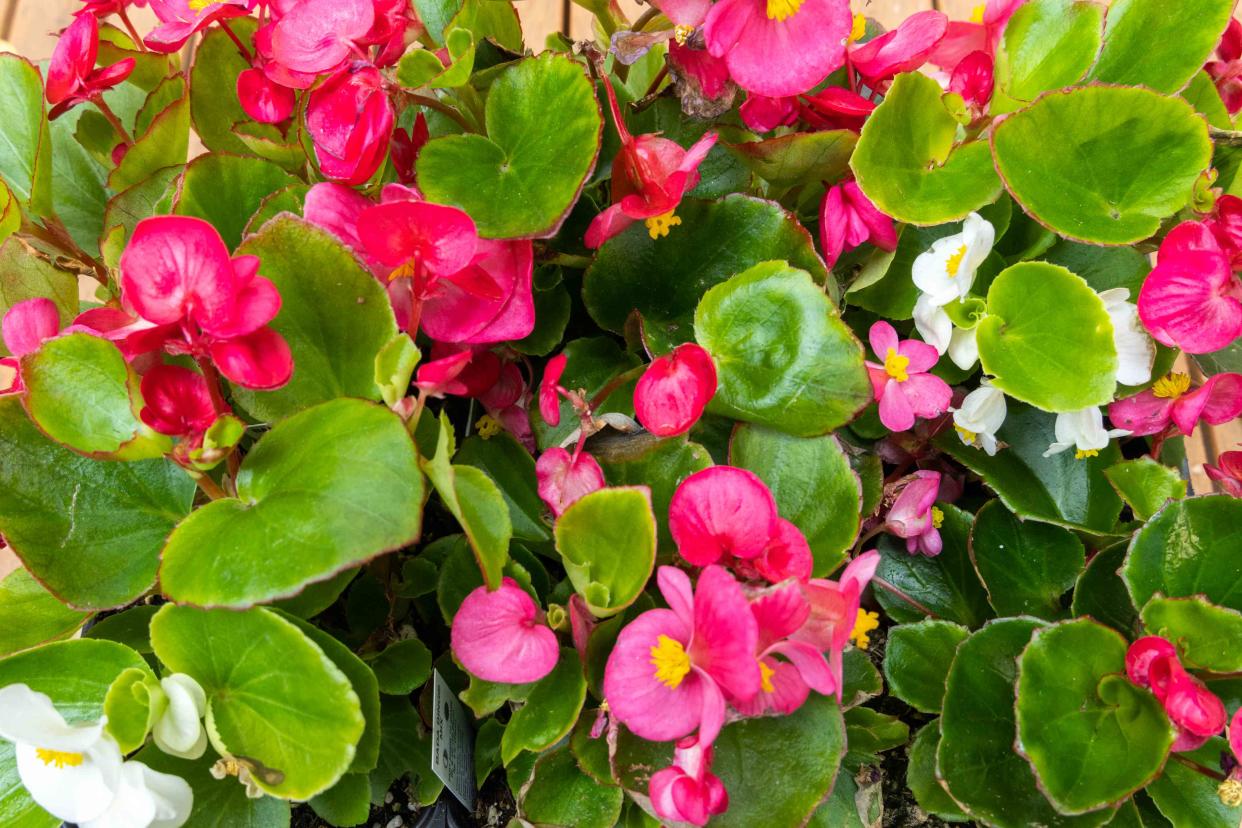
The Spruce / Jayme Burrows
Reviewed by Debra LaGattuta
Begonias are fairly low maintenance and can provide long periods of bloom. In cooler climates, these tropical plants are mainly grown as indoor houseplants or as annuals outdoors in summer. With their richly-colored blooms and foliage, they're commonly used by landscapers in outdoor container arrangements. These plants like partial shade and slightly acidic soil. The roots may be toxic to some animals. Read on for our care guide.
Common Name | Begonia |
Botanical Name | Begonia |
Family | Begoniaceae |
Plant Type | Tropical evergreen, annual |
Mature Size | Varies, 6-18 inches |
Sun Exposure | Partial sun to shade |
Soil Type | Moist, rich, slightly acidic |
Soil pH | 5.7 - 6.2 |
Bloom Time | Varies, seasonal |
Flower Color | Pink, red, white, yellow, orange |
Hardiness Zones | 9-10 (USDA), some varieties 6-9 |
Native Areas | South and Central America, Africa, South Asia |
Toxicity | Roots may be toxic to some animals |
Fun Fact
The genus Begonia comprises more than 2000 different plant species. There are thousands of different begonia species and cultivars because of the way they can hybridize with each other.
How to Care for Begonias
These are the main care requirements for growing begonias:
Likes indirect sunlight or shade
Needs regular watering
Requires well-draining soil that is rich in organic matter
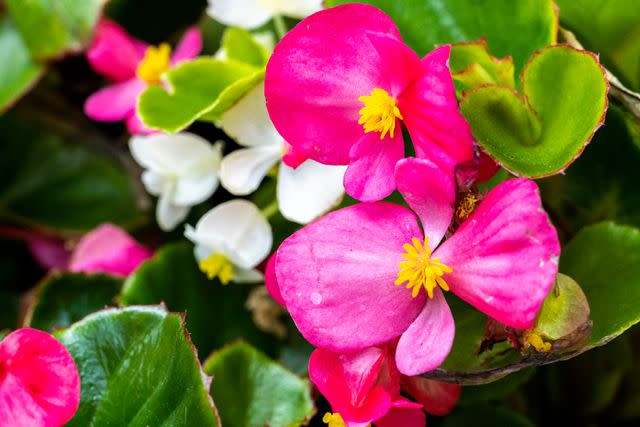
The Spruce / Jayme Burrows
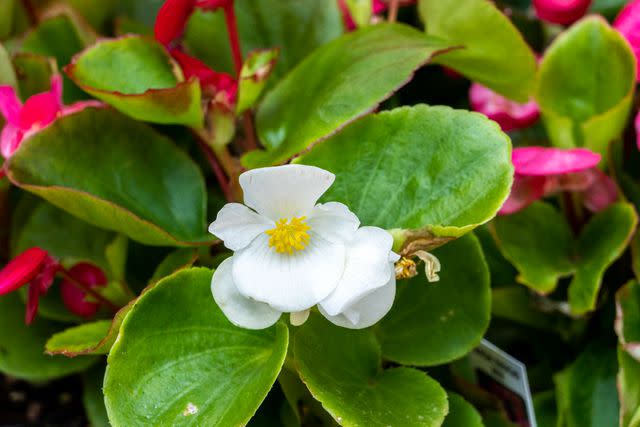
The Spruce / Jayme Burrows
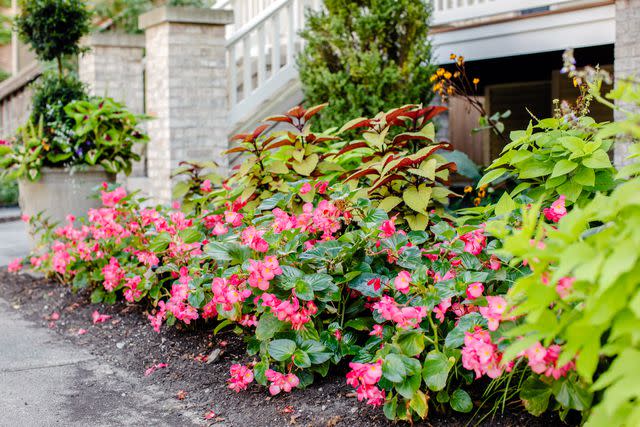
The Spruce / Sarah Crowley
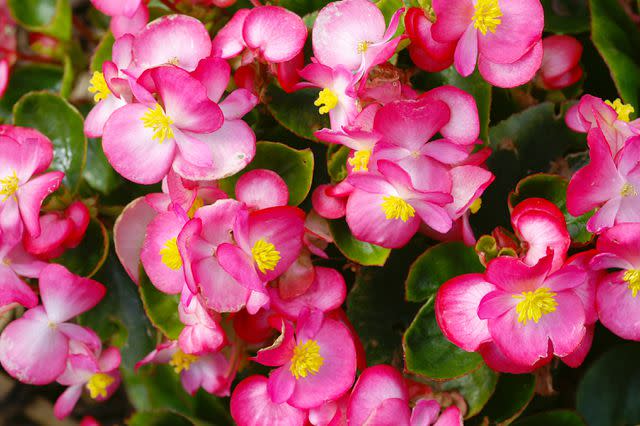
schnuddel / Getty Images
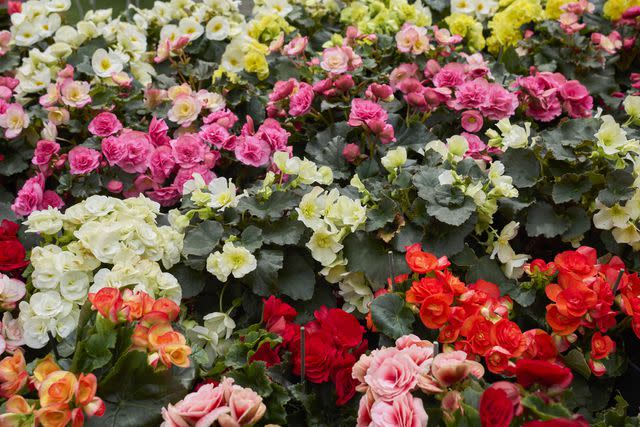
seven75 / Getty Images
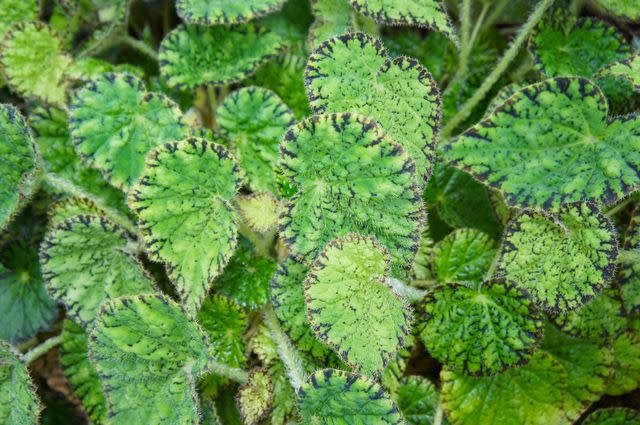
skymoon13 / Getty Images
Light
Tuberous begonias in containers need a bit of sun but partial sun is fine. Indoors, begonias do best in indirect light. Fibrous or wax begonias planted in the garden will flower consistently in shade or partial shade. Too much bright sun might wilt the delicate petals or cause the colors to fade.
Soil
Begonias enjoy a porous, rich soil that is slightly acidic. Peat-based soils with plenty of organic matter including leaf mold are good for begonias. Good drainage is essential. A basic potting mix such as that used for African violets will also suffice.
Water
Water your begonia thoroughly about once a week, and wait until the top half inch of the soil is dry before watering. It's very important to avoid overwatering begonias, as this can lead to root rot.
Temperature and Humidity
Begonias grown indoors grow best with a consistent temperature range of 65 to 70 degrees Fahrenheit. Fibrous begonias planted in the garden should be all right with cool late summer evenings, but will begin to go dormant once the nights and days turn colder. Being a tropical plant, begonias like some humidity (just under 50%). In houses that tend to have dry air from winter heat, placing a saucer of water near your begonia, or using a humidifier in the room, can help the plant stay healthy and hydrated.
Fertilizer
Fertilizer needs can vary slightly depending on the cultivar of your begonia. For rhizomatous begonias grown indoors, a basic water-soluble fertilizer mixed to quarter or half strength, applied to moistened soil in spring, will help promote blooms. Tuberous begonias are somewhat more hearty feeders, and like a 5-1-1 fertilizer (such as fish emulsion) applied twice a month during the blooming season. For hardy begonias, mix a bit of diluted fertilizer with some compost or peat moss and apply sparingly (too much fertilizer may harm the leaves).
Types of Begonias
The begonia is a large and varied genus with hundreds of cultivars. There are four basic types based upon the shape of their roots: tuberous, fibrous, hardy, and rhizomatous.
Polka Dot Begonia (Begonia maculata): This angel-wing begonia cultivar has gorgeous narrow deep green leaves with silver spots and pale pink flowers.
Painted Leaf Begonia (Begonia rex): Also known as the king begonia, this is a sub-type of rhizomatous begonia also known for its dramatic foliage. The leaves are deep or silvery green with attractive accents of burgundy or pink.
Eyelash Begonia (Begonia bowerae): Named for the black edges on its teardrop shaped leaves, this rhizomatous begonia is prized for its vibrant foliage.
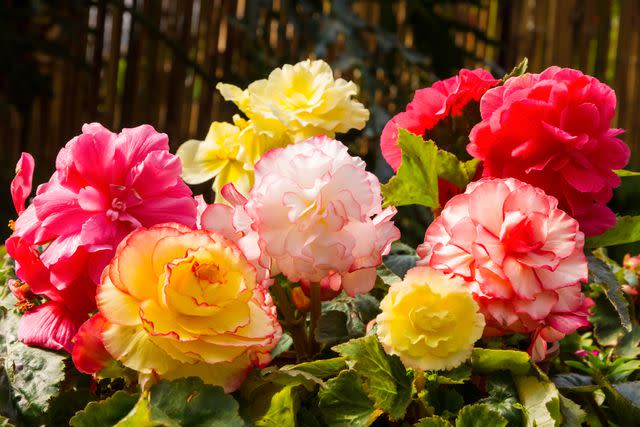
kubtee145 / Getty Images
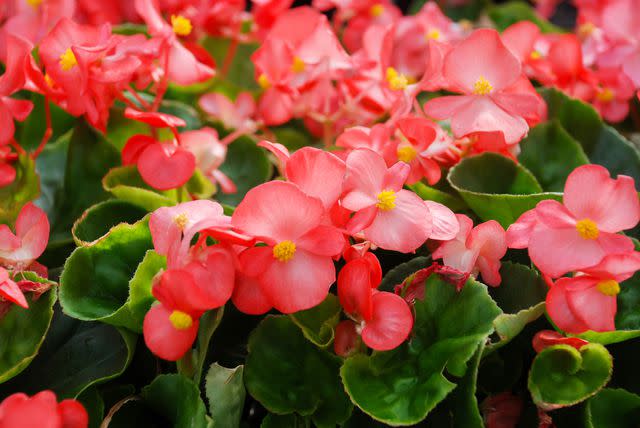
Pinrath Phanpradith / Getty Images
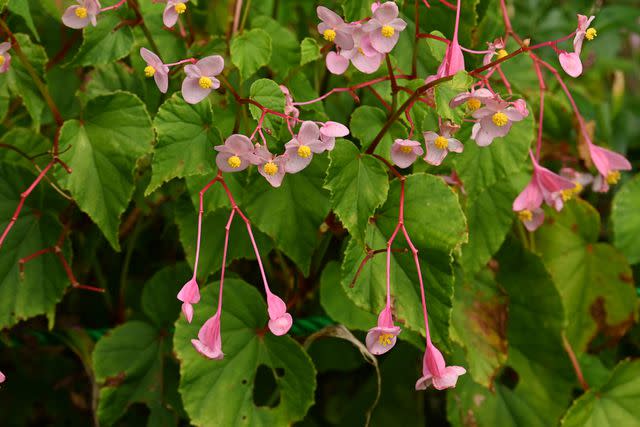
undefined undefined / Getty Images
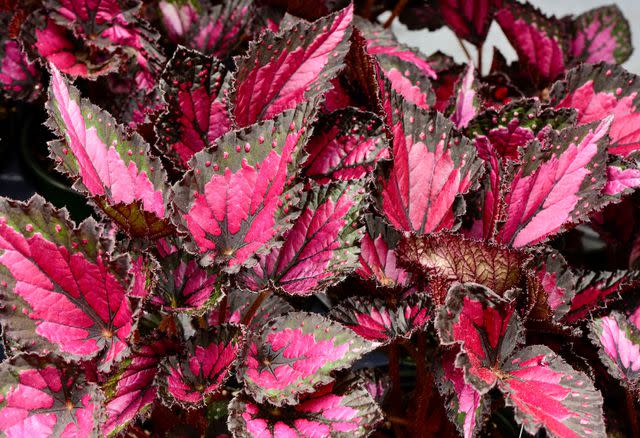
Wirestock / Getty Images
Pruning
In addition to deadheading, begonias may occasionally need light pruning to remove any dead or damaged stems or leaves.
How to Propagate Begonias
Begonias may be propagated from leaf cuttings, rhizomes, or tubers. Here's how:
Place a leaf cutting in water in indirect sunlight.
Once roots form, plant in potting soil.
Rhizomes and tubers can be pressed gently into moist potting soil and should begin to sprout new growth in a few weeks.
Potting and Repotting
Begonias grow very well in pots, indoors and outdoors. Outdoors, a terra cotta pot with good drainage works well. Indoor containers should also have excellent drainage. As the tubers or rhizomes grow, the begonia will occasionally need to be repotted to give it more room. Just gently lift the roots or tubers and place in a new pot with fresh potting soil, then water lightly.
Common Pests and Plant Diseases
Generally speaking, begonias are not bothered by many pests or diseases. Root rot can occur as a result of overwatering, as can stem rot or powdery mildew. The main pests that can affect begonias include mealy bugs, spider mites, snails and slugs (the latter two enjoy munching the leaves and are easy to remove by hand).
Overwintering
Begonias should be brought indoors if the temperatures drop below 60 degrees Fahrenheit.
How to Get Begonias to Bloom
Bloom Months
In summer, begonias can bloom for weeks at a time, from summer through late autumn. When kept indoors, they're capable of blooming non-stop, depending on variety. Tuberous begonias do go through a period of dormancy when flowers and foliage die back for a few weeks. But other types of begonia can bloom constantly all year long. Be sure you're following care instructions for the specific type of begonia you have.
What Do Begonia Flowers Look Like?
Begonia flowers bloom in single or double flowers that are red, pink, yellow, white, or orange.
How to Encourage More Bloom
Using fertilizer regularly can help keep begonias blooming. The trick is to apply with a light touch, using diluted liquid fertilizer. Never apply fertilizer when soil is dry. Regular deadheading is also essential to keep the plant in tip-top shape and promote maximum blooms.
Common Growing Problems
Flowers Wilting
If the flowers seem to be wilting or turning brown, your begonia may be getting a bit too much bright sunlight. Move to indirect light/partial shade.
Plant Not Blooming
If your begonia plant is not flowering, it could be due to too much or little water, extreme temperatures, or not enough light. Ensure optimum growing conditions to encourage bloom.
Frequently Asked Questions
Do begonias like sunlight or shade?
Begonias prefer partial to full shade, or indirect sunlight. Too much direct sunlight can cause theeir flowers to wilt or fade.
Do begonias come back every year?
Begonias are a tropical plant and will only live through the winter in a very warm climate. The exception is the hardy begonia which can live in USDA Zones 6-9. But some types of begonias can live year round indoors.
Do begonias spread?
Generally speaking begonias don't spread very rapidly. The rhizomatous begonias (such as Rex begonias) will spread slightly faster than fibrous or hardy begonias.
Read the original article on The Spruce.

